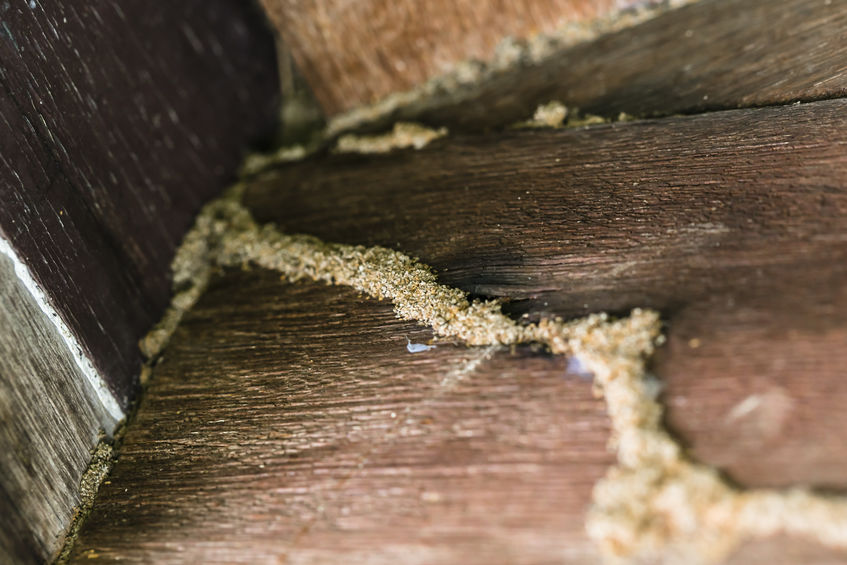The eastern subterranean termite is the most widely distributed, and the most economically costly termite species in the US, and it’s the only termite pest in Massachusetts. Mature eastern subterranean termite colonies contain hundreds of thousands or even millions of individual termites, most of which are workers. Workers are responsible for carrying out several tasks that benefit the entire colony including gathering food sources, nest construction, caring for offspring, and colony expansion. Since only workers are capable of feeding themselves, they must physically feed soldiers, the queen, the king, and nymphs. In order to search for bits of wood and plant matter, workers excavate foraging tunnels in the soil, and the depth of these foraging tunnels vary depending on relative moisture content in soil and outside air temperature.
Under normal summer conditions in Boston, workers likely forage within a few feet of the ground-surface, but the primary nest that houses the queen and her eggs is located at a greater depth in order to remain insulated from extreme weather conditions. Subterranean termite colonies are normally found 18 to 20 feet below the ground-surface, and workers regularly travel 30 feet below the ground. Entire neighborhoods are likely located above numerous subterranean termite colonies, but as long as food sources remain plentiful in soil, workers have no need to venture above ground to excavate structural wood within homes. Workers from large colonies are known to forage over areas within a radius of 125 feet from the primary nest. When workers do infest structural wood in homes they consume only the soft springwood across the grain, as denser summerwood is too difficult for workers to excavate. As a result, heavily damaged lumber has a honeycomb-like appearance, and the fragile surface easily breaks in response to pressure. An average subterranean termite colony that has reached maturity consumes 83 grams of cellulose per day, which equals 39 feet of 2×4 inch lumber annually.
Have you ever visually spotted termite-damaged lumber?

